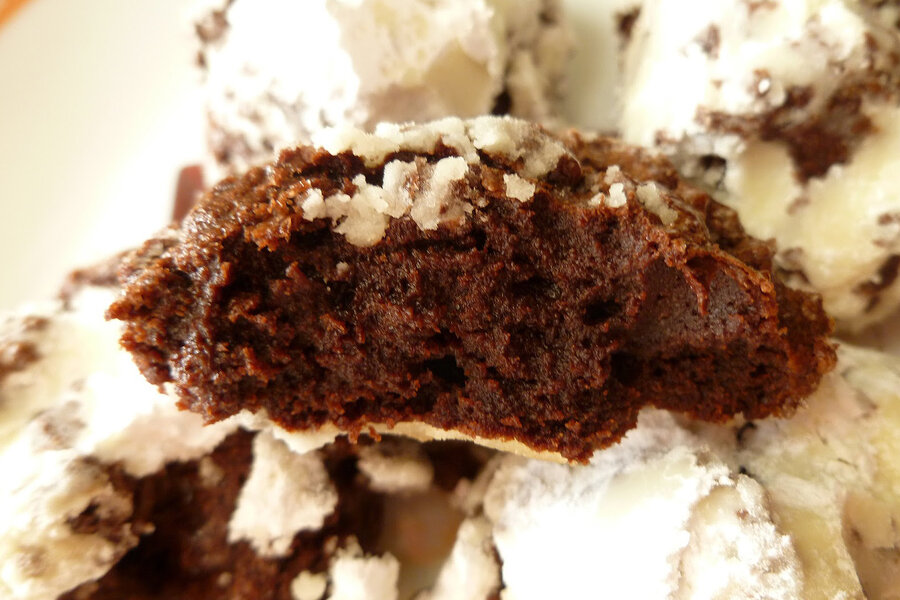By Carol Ramos, The Pastry Chef's Baking
From Pure Chocolate by Fran Bigelow
12 ounces semisweet chocolate, finely chopped
1-1/2 ounces unsweetened chocolate, finely chopped
1 stick plus 2 tablespoons unsalted butter, room temperature
3/4 cup plus 2 tablespoons brown sugar
2/3 cup sugar
1-1/2 teaspoons pure vanilla extract
3 large eggs
1-3/4 cups cake flour, sifted then measured
8 ounces bittersweet chocolate, cut into 1/4-inch chunks
1/2 cup confectioners' sugar, sifted, for rolling (optional)
1. In a double boiler, melt the semisweet and unsweetened chocolates over low heat until melted and smooth. Let cool to lukewarm.
2. In a mixer fitted with the paddle attachment, beat together the butter, sugars, and vanilla extract until light and fluffy, 3 to 5 minutes. Beat in the eggs, one at a time, stopping several times to scrape the bowl. Pour in the melted chocolate and mix to combine.
3. Fold in the sifted flour by hand until no traces of white remain. Fold in the bittersweet chocolate chunks. Chill for 1 hour.
4. When ready to bake, preheat oven to 325 degrees F. Line two cookie sheets with parchment paper or Silpats.
5. Using a scoop or large spoon, scoop 2 tablespoons of dough for each cookie, roll in sifted confectioners' sugar (if desired) and place on lined cookie sheets, leaving about 2 inches of space between cookies.
6. Bake for 12 to 14 minutes or until cracked and puffed on top. For smaller cookies, bake 9 to 10 minutes. Let cool on sheets for about 10 minutes. Transfer to racks to cool completely.







